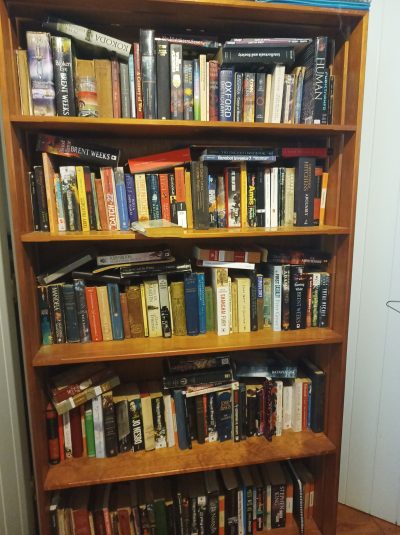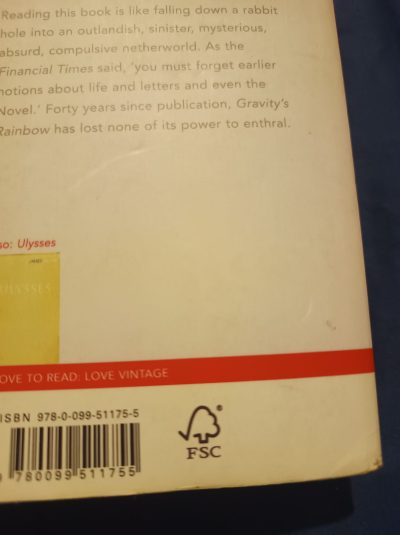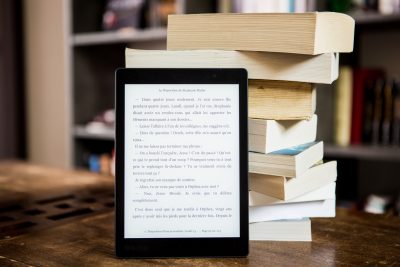
Fast Fiction

Unsplash.com
I’ve got a confession to make.
I’ve never been that engaged with sustainability. That’s not to say I’ve been unsustainable. I don’t own an air conditioner, car, or dryer. I rarely eat fast food, don’t travel internationally, and almost never buy new clothes. None of this was by design. In fact, it mostly has to do with the typical student’s complaint – no money.
Regardless, as of a few weeks ago, I was satisfied with the sustainability of my lifestyle, when I thought of it at all. I was an accidental eco-warrior. I didn’t see a need to engage with sustainability as a concept, because it simply didn’t touch my life in a meaningful way – a Venn diagram that didn’t intersect in the middle.
But that word, sustainability, kept popping up around me. Everything was about sustainability – fashion, food, coffee, cars, and most importantly, one of my Uni subjects. So, what do you do when you’re pursued by a feeling of nagging guilt about a societal issue that you don’t quite understand?
As an avid reader, I had only one option – read a book on it.
So I went to Dymocks, and bought a fresh, shiny new copy of the latest sustainability book: Together We Can. I plopped myself down on an armchair, with my overflowing bookshelf at my back. I opened the first page, took a moment to breath in the smell of pristine paper, and flipped to the introduction, which read:
“If you’ve picked up Together We Can, you’re already doing a lot to save the planet.”
I nodded along. Good on me.
Wait a second.
I was helping the planet by picking up a book? Surely not. In fact, books are made entirely of paper, weren’t they? That’s got to mean deforestation, right? Where do books go when they’re done with? Are they dumped in the landfill?
I sat in thought, flanked by hundreds of volumes, with my shiny new copy of Together We Can in my lap.
Uh-oh.
Were books unsustainable?
The Sustainability of Books
A frantic Google trawl found the simple answer: yes, books are unsustainable. As you might guess, paperbacks are made of paper. Every book you or I have ever held is a portion of a tree – 1/65th of a tree, on average. There are 826 million books sold every year, which works out to 12 million dead trees.
It gets worse. Trees convert atmospheric CO2 to oxygen, which helps fight climate change. When you factor in this loss, alongside transport and manufacturing pollution, the production of each book emits 3kg of carbon.
What’s your favourite book series?
Is it Lord of the Rings? Since it was first published, Tolkien’s fantasy epic has led to 2.3 million trees felled, and 450 million kg of carbon emitted.
Maybe it’s Harry Potter. 7.6 million trees cut down, and 1.5 billion kg of carbon emitted.
Armed with this bleak knowledge, I decided to do an audit of my bookshelf.

My bookshelf
I counted 198 volumes total. That’s 3 trees felled (not including shelving), and around 600kg of carbon emissions.
That’s not counting the other impacts of print publication: overuse of water, toxic metal pollution, and million of volumes added to landfills each year.
Things were looking bad for my eco-warrior status. My calm surety that I was living an environmentally conscientious life was shattered. I read a lot of books. The question was: where do I go from here? How do I make one of my most engrained habits more sustainable?
Ethically sourced paper
Maybe I went a bit overboard with my criticism before. The publishing industry isn’t quite as villainous as I made out. Actually, many publishing houses are starting to improve their sustainability outcomes. One the key avenues to achieve this is using ethically sourced paper either recycled, or responsibly procured from a sustainable timber yard.
So how do you know if your book has been ethically produced?
Industry insiders would tell you to look for a Forest Stewardship Council logo on the back cover. FSC accreditation is the gold standard for sustainable book manufacture, and it indicates that materials come from a recycled source or well-managed forest.

An FSC logo on my copy of Gravity’s Rainbow
When I saw this, I breathed a sigh of relief. I’d figured it out! All I had to do when buying a book was look for the FSC logo, and I was doing my due diligence, right?
Wrong.
The FSC, it seems, isn’t as reliable as one might hope. It’s been slammed by Greenpeace for condoning illegal logging, greenwashing habitat destruction, and violating indigenous rights. Similar allegations have been levelled at other major certifiers. As a measure of sustainability, certification is better than nothing, but not by much. My search continued.
E-books

Unsplash.com
Since their advent, e-books like Amazon’s Kindle have been hailed as an environmentally friendly alternative to traditional publishing. Their fans derided print as ‘dead tree publishing’, and praised the sustainability credentials of their gadgets. You can store thousands of books on an e-reader, and each new purchase results in minimal carbon emissions.
But after my disillusionment with the FSC, I was too wary to fall for another greenwash. The story with e-readers, it seems, is similarly muddled. An e-reader’s manufacturing process emits 30kg of carbon dioxide – ten times as much as a book. Plastics and toxic materials are crucial for e-reader production, and poison the environment if the device is disposed of improperly. One essential e-reader ingredient, the mineral coltan, is mostly mined in the Congo, and its extraction has contributed to a continuing civil war.
So is an e-reader more sustainable than a print book? Well, if you use it to read 10 books a year, recycle it responsibly when it breaks, and disregard its political impact, then maybe.
Hmm. Not quite what I was hoping for.
Fast Fiction
You’ve probably heard of fast fashion – the rapid production of low-quality, hastily discarded garments, an environmentally and socially ruinous practice. Its antithesis is slow fashion – buying clothes responsibly and sustainably. In practice, slow-fashionistas mostly just shop for used clothing. Re-use, re-purpose, recycle.
You probably know where I’m going with this: publishing has a fast fiction problem. Irresponsibly sourced, quickly discarded books. To remedy it, we should take a leaf out of slow-fashion’s book, and source copies second-hand. By opting for a used volume, you effectively cut a book’s carbon emissions by 80%. And crucially, for me as a Uni student, this option is far, far cheaper. Check out your local used bookstore today!
But if you’ve read this far, you’ll know there’s a catch.
Ever heard of Dan Brown’s the Da Vinci Code? The thriller sold 80 million copies, was adapted into a major blockbuster, and was utterly awful. It holds the dubious honour of being the most donated book to numerous charity shops – and one of the least purchased. Some shops even begged customers to stop donating copies. Every time Brisbane holds a used book event, such as Lifeline Festival, you can easily find 60 or so copies of the Da Vinci Code. Similarly, E.L. James’ erotic drama, 50 Shades of Grey, has been clogging used bookstores for years. No one will touch these novels, even for bargain prices – all those trees cut down, all that carbon released, and all those volumes rotting at the dump. All for nothing.
Conclusion
So I started out with self-satisfied about my sustainable lifestyle. I discovered a few unpleasant truths about my favourite pastime, learned that I wasn’t quite as eco-friendly as I thought, and searched for a better way to read. And I found…
Well, nothing conclusive. There are some ways to reduce the impact of your reading habit, but no magic bullet. Even my favoured option, buying used books, won’t stop the publishing industry from pumping out millions of low-quality books, destined for the landfill.
I guess that was what I learnt – you can’t be perfect with this stuff. My previous attitudes – both complacently applauding my sustainability while disregarding its relevance, and frantically trying to fix my consumption – were ultimately unproductive. Sure, it’s good to seek ethically sourced books, or get an e-book reader (maybe), or buy used. But you can’t fix the world all at once. That’s my new attitude – relaxed, but resolute. Make your best effort, but don’t beat yourself over the head. And I think I’ll bring it to those other parts of my life, the ones I assumed were very sustainable. And if they aren’t? I’ll just do what I can, when I can do it. That’s a more sustainable attitude toward sustainability.
Bibliography
[see page 2]
